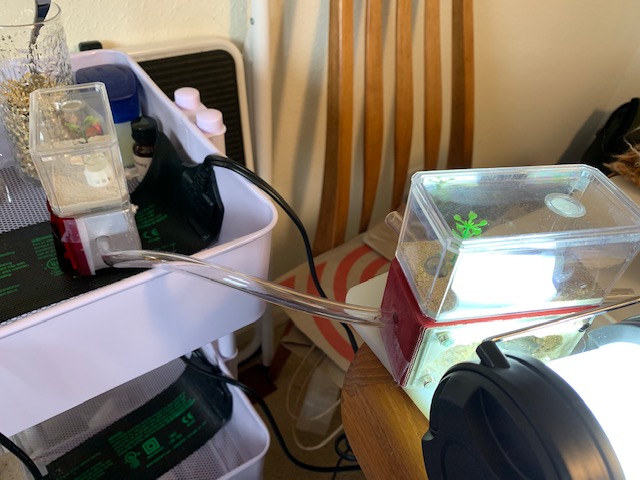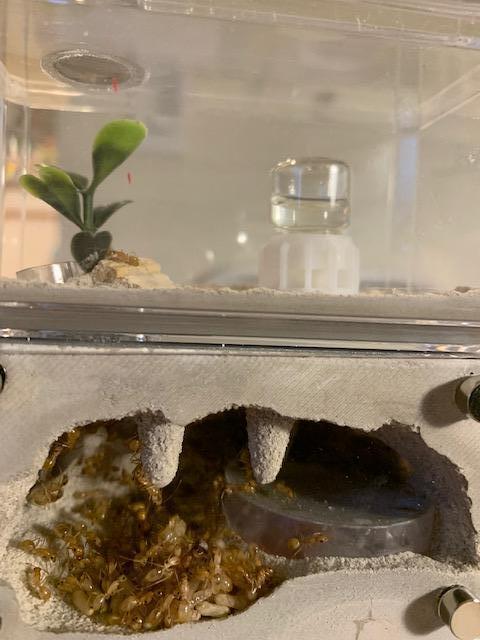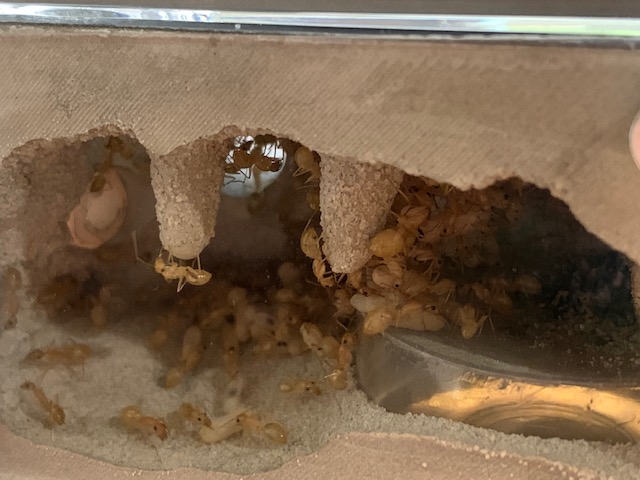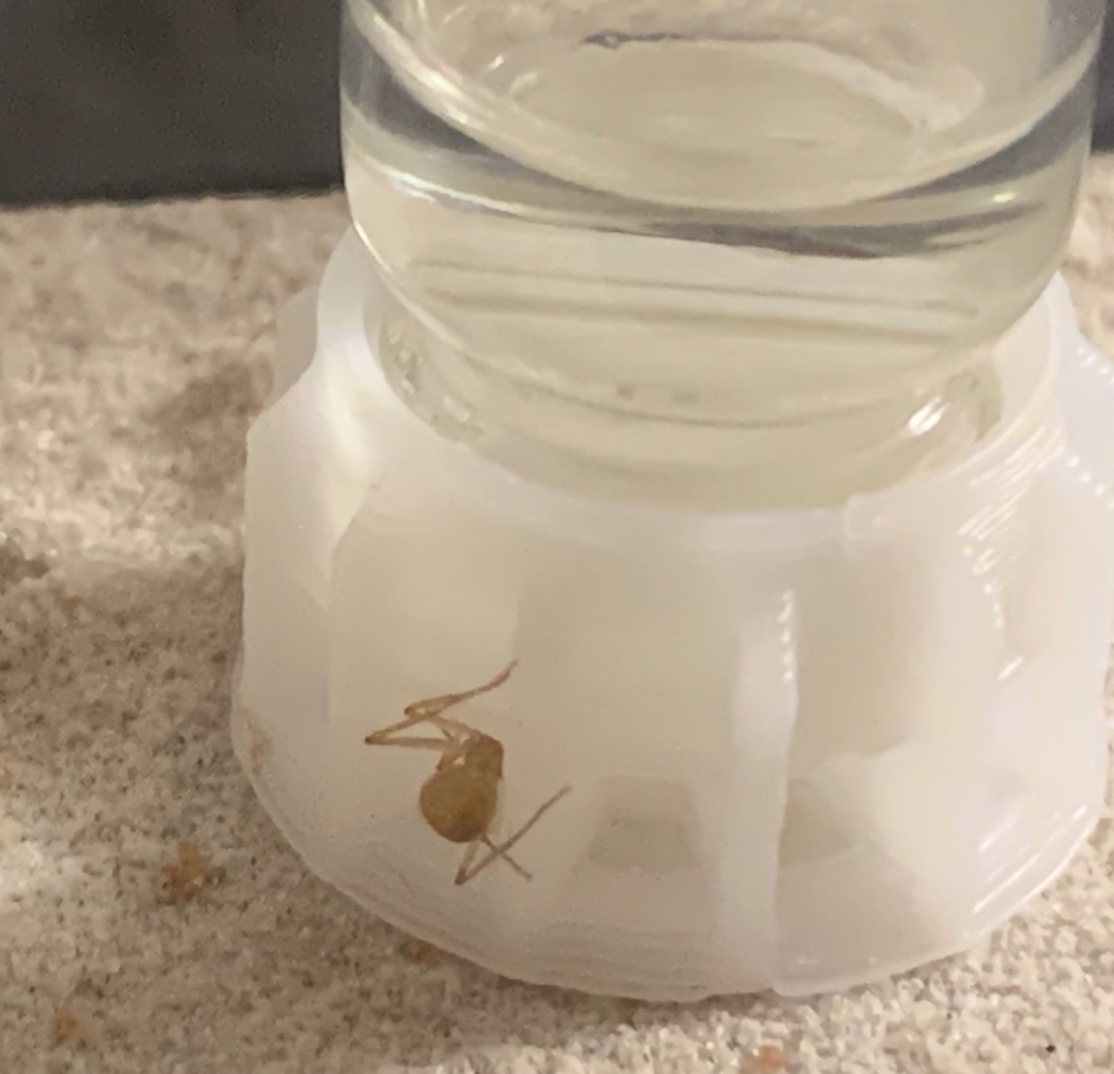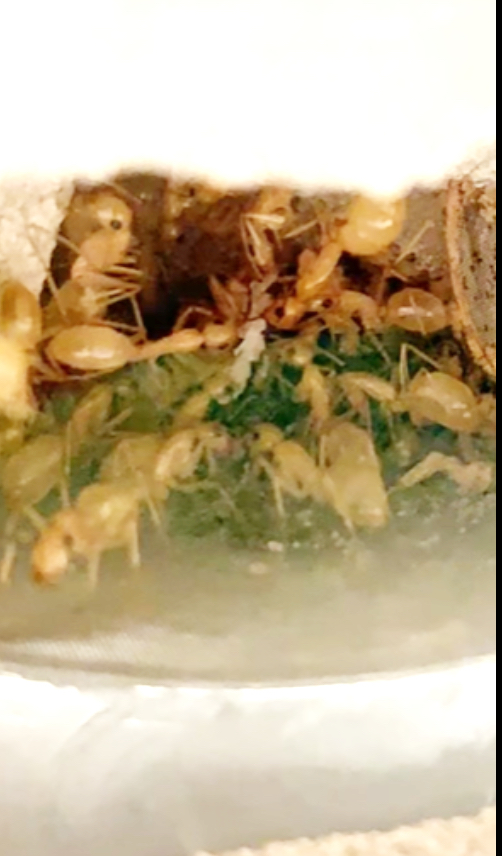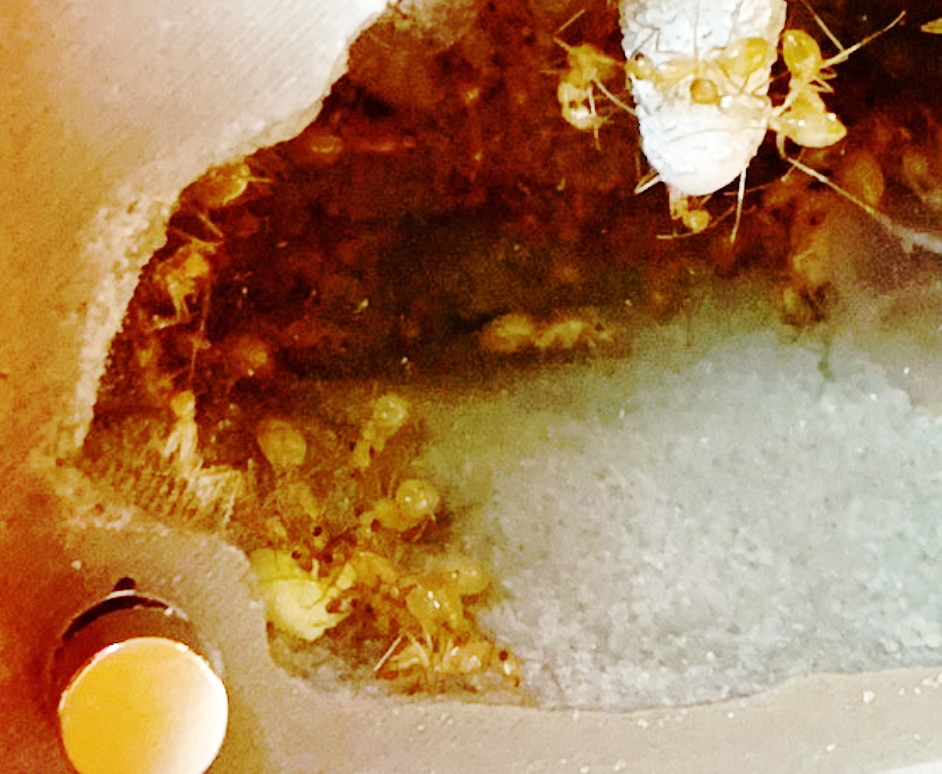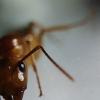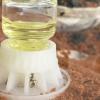EDIT: Acromyrmex versicolor (California native leafcutter (fungus-growing) ant) added on page 5.
Camponotus fragilis ("fraggles"):
After I got my V. pergandei, the southern California seller mentioned how much fun C. fragilis "fraggles" (his term) are. They are also:
- non-stinging (?) or at least supposed to be not very dangerous to keep
- non-hibernating
- large
- with majors
- not too picky about food
- reasonably diurnal
Though I was concerned they would be nocturnal, especially given their very pale yellowish color and all the online descriptions saying they are nocturnal, I was assured they are active during the day (and they are).
MORE NOTES:
I've decided to update this first entry with more notes, sort of summarizing my experiences with my fraggles.
- Fraggles are fast, jittery, nervous, big, and beautiful ants; people really seem to like their light color.
- Fraggles can be picky eaters, but if some learn about a new food, others will learn, too.
- My fraggles ate their brood in their "winter" season, when they were at room temp. Heating made them stop doing that.
- They have a reputation for being more prolific than other Western US Camponotus.
- Once established they still don't like light, but are semi tolerant of it. In a Fortress with no red filter covering they are sticking close to the darkest corners.
- And now I've just learned they cannonball around their outworld SO fast they can hurl themselves right over Fluon or other climbing discouragements. Basically they can "fly" up by sheer momentum. Eek.
FOOD SO FAR (ymmv):
- cut up mealworms
- live fruit flies (though they at first thought they were enemy ants, and threw them out as trash - read the journal)
- cooked lamb, shrimp
- cut up flies
- cut up fly larvae and pupae
- dry bloodworms (not soup)
- other stuff I'm forgetting
----
I believe the queen was captured in 2019 in southern California.
2019.9.28 Fraggles arrive in test tube. About 9 nanitics, queen (pretty small queen, compared to C. sansabeanus, esp. given nanitics are almost the same size as C. sansabeanus), and I think what must have been a small amount of brood.
Installed them into a plastic box with Velcro on the box wall so the test tube doesn't roll around.
This is around when I found a loose worker hiding in an old test tube on the table. I thought it was C. sansabeanus and put her in with the sansabeanus (yeah they do superficially look pretty similar). She was nervous, got near the queen and other workers, and freaked out big time and ran screaming out of there. I figured out she was fragilis and put her into the fragilis outworld, but I think she got stuck in some adhesive and died soon after.
2019.10.1 I get concerned the queen looks like her gaster has some tears/rips in it. I post here on Formiculture.com about it with pics. She still has the markings but months later is doing okay. NOTE: Many of the offspring have the EXACT SAME "rip" markings.
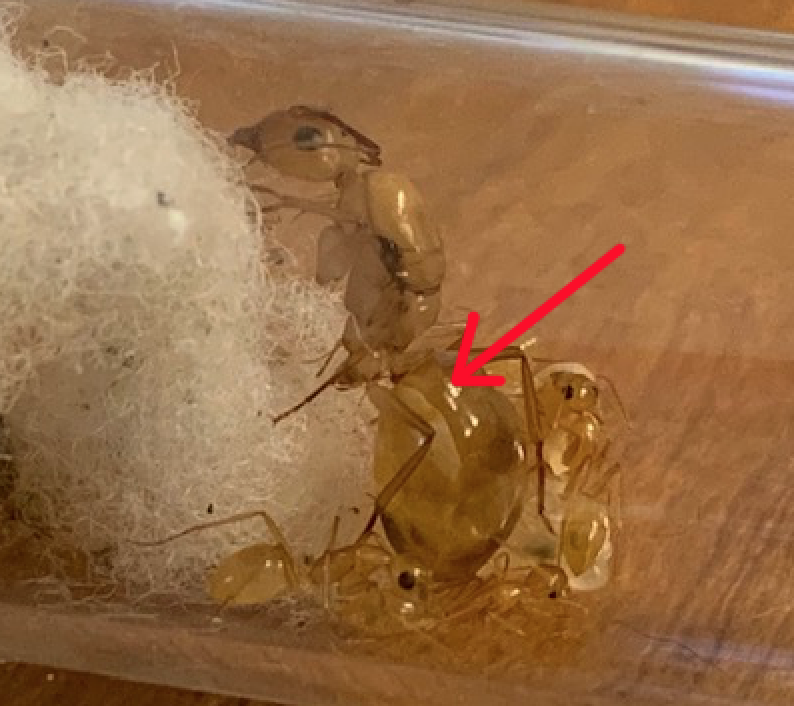
2019.10.3 I noticed the ants do a weird jerky, spasmic movement, especially when startled or the light comes on. No other colony does this.
2019.10.20ish Found a mite in the fragilis tube while feeding mealworm and killed it with tweezers. Freak out for a bit. Hasn't happened since.
Around this time I also got tired of waiting for my heating cable and I ordered a seedling warming mat and thermostat.
2019.10.28 I transferred the fraggles from test tube to a Tarheels mini-hearth (with one of the nestmates set up with water in it). They moved very voluntarily. I hooked up the test tube to tubing that led to the mini-hearth. The fraggles are fast and curious and soon the workers decided to move. The queen eventually lumbered after the rest of them to her new home. There seems to be not a ton of brood - or at least, at the time of transfer it must have been smaller in size.
However, their numbers start exploding in the mini-hearth with seedling heating mat and thermostat set to about 90 degrees F (roughly 32.2 C). I just put the mini-hearth on top of the seedling mat. The mini-hearth is actually not directly in contact because I put some felt pads on the bottom so it doesn't scratch up wood surfaces.
NOTE (copied from V. pergandei journal): I did finally also get the heating cable, very delayed. I found it awkward and frustrating. Since it can't come within a couple inches of itself and the Amazon reviews are full of warnings about spontaneous combustion, plus it would be harder to hold a thermostat to it, I decided the seedling heating mat was indeed a better option for my situation where I have limited real estate. The heating mat plus thermostat combo works pretty well in my opinion. (In fact I have two sets now.)
They have an Ant Nectar feeder in the outworld and their staple food is cut up mealworm, feeding with increasing frequency as their numbers increase.
2019.11.10 I text seller a pic of queen in mini-hearth with over a dozen fat larvae and/or pupae about the size of rice grains. One pupa is extra large.
2019.12.4 Fraggles have acquired some kind of major or median worker. She is larger than the others.
I give them a live mini mealworm and the major's job apparently was to hang back and let the smaller workers handle it. The queen also stays away, in contrast to C. sansabeanus where the huge queen is the most aggressive of all of them and would march over and attack big time.
Even more brood.
Edited by OhNoNotAgain, August 11 2024 - 10:15 PM.






